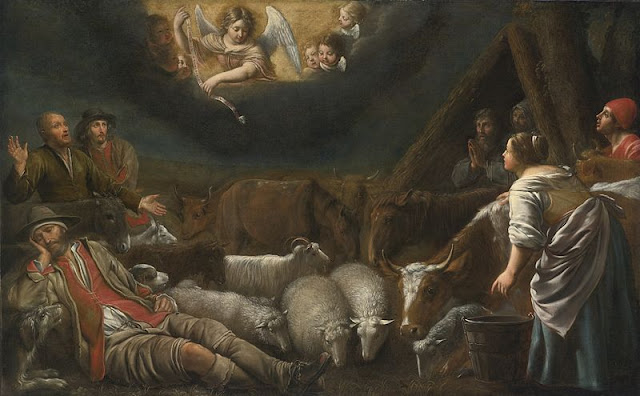Our last painting by Albert Anker is of a lovely young girl knitting. I use four needles to knit like this when I make sleeves or socks. I love the color of her skin and the curly wisps of hair around her face. Do you or any of your children like to knit?
Our final work by Hector Berlioz is Les Troyens - Royal Hunt and Storm.
I don't know if it's really fitting to choose this poem as the last by Robert Browning, but he has a lot of wisdom and sees things from a different angle than most and isn't afraid to take on difficult subjects to make his point. Here he describes visiting Paris for the baptism of the prince and then walking along the Seine River and visiting the morgue. He talks about three men he saw there that had drowned themselves in the river and surmises what their lives were like and why they had wanted to end it all. He completes his poem with some sound wisdom on what to seek in life -"It’s wiser being good than bad; It’s safer being meek than fierce: It’s fitter being sane than mad." and "what began best, can’t end worst, Nor what God blessed once, prove accurst."
Apparent Failure
I.
NO, for I ’ll save it! Seven years since,
I passed through Paris, stopped a day
To see the baptism of your Prince;
Saw, made my bow, and went my way
Walking the heat and headache off,
I took the Seine-side, you surmise,
Thought of the Congress, Gortschakoff,
Cavour’s appeal and Buol’s replies,
So sauntered till—what met my eyes?
II.
Only the Doric little Morgue!
The dead-house where you show your drowned
Petrarch’s Vaucluse makes proud the Sorgue,
Your Morgue has made the Seine renowned.
One pays one’s debt in such a case;
I plucked up heart and entered,—stalked,
Keeping a tolerable face
Compared with some whose cheeks were chalked
Let them! No Briton’s to be baulked!
III.
First came the silent gazers; next,
A screen of glass, we’re thankful for;
Last, the sight’s self, the sermon’s text,
The three men who did most abhor
Their life in Paris yesterday,
So killed themselves: and now, enthroned
Each on his copper couch, they lay
Fronting me, waiting to be owned.
I thought, and think, their sin’s atoned.
IV.
Poor men, God made, and all for that!
The reverence struck me; o’er each head
Religiously was hung its hat,
Each coat dripped by the owner’s bed,
Sacred from touch: each had his berth,
His bounds, his proper place of rest,
Who last night tenanted on earth
Some arch, where twelve such slept abreast,—
Unless the plain asphalte seemed best.
V.
How did it happen, my poor boy?
You wanted to be Buonaparte
And have the Tuileries for toy,
And could not, so it broke your heart?
You, old one by his side, I judge,
Were red as blood, a socialist.
A leveller! Does the Empire grudge
You’ve gained what no Republic missed?
Be quiet, and unclench your fist!
VI.
And this—why, he was red in vain,
Or black,—poor fellow that is blue!
What fancy was it turned your brain?
Oh, women were the prize for you!
Money gets women, cards and dice
Get money, and ill-luck gets just
The copper couch and one clear nice
Cool squirt of water o’er your bust,
The right thing to extinguish lust!
VII.
It’s wiser being good than bad;
It’s safer being meek than fierce:
It’s fitter being sane than mad.
My own hope is, a sun will pierce
The thickest cloud earth ever stretched;
That, after Last, returns the First,
Though a wide compass round be fetched;
That what began best, can’t end worst,
Nor what God blessed once, prove accurst.






















